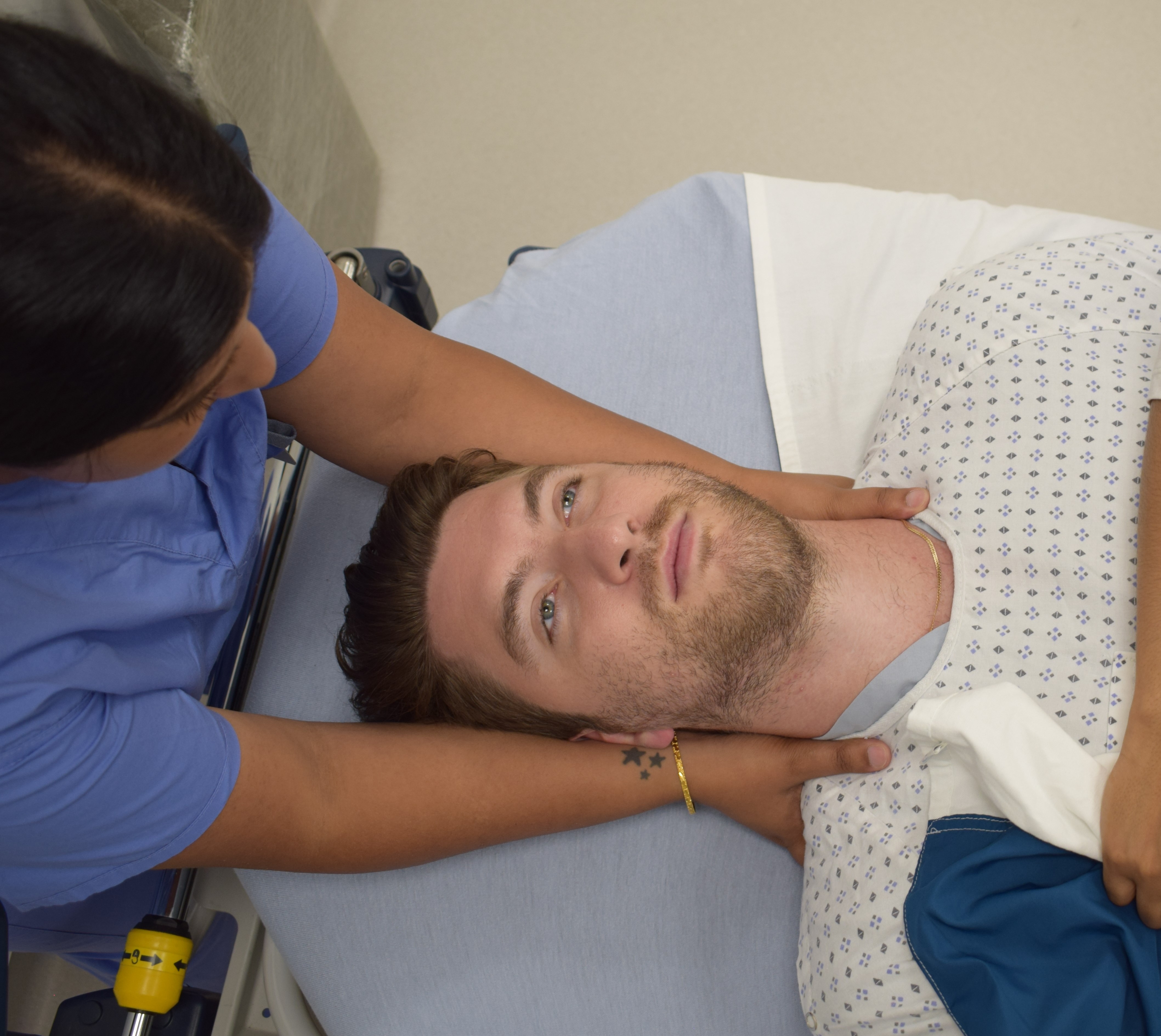MOD 1 - Patient Transfers
1/34
There's no tags or description
Looks like no tags are added yet.
Name | Mastery | Learn | Test | Matching | Spaced |
|---|
No study sessions yet.
35 Terms
Indicators of Spinal Injury
Pain in the neck or spine
Paralysis/change in motor skills
Paresthesia - abnormal sensation in the upper or lower extremities
Point tenderness on palpation of the spine
who coordinates all movements
The caregiver at the head of the bed
clear directional instructions specify what
whose RT/LT it is (eg. patient’s r/l)
purpose of draw sheets
promote patient comfort and reduce friction on the patient's skin during movemen
ideally draw sheets are placed
above a patient’s shoulders and below the hips
when are pillows and sponges used
when moving a patient from a supine to an oblique position
to maintain the body’s position
Management of Tubes
tubes are secured to skin with tape
drainage bags are secured to the pt’s gown
drainage tubes ends should be kept sterile
DO NOT clamp tubing unless ordered
no kinks
draining bags are kept below drainage site
neutral c-spine alignment
patient's head and neck are in complete alignment with the thorax
how to confirm c-spine alignment
caregiver places their index finger on the sternal notch and ensures that the sternum is aligned with the point of the chin
Cradle Hold
used when moving pt up/down, side to side, turning

minimum # of people to move a spinal cord injury pt
3
when can you perform a transfer with 2 caregivers
confirmed that the patient does NOT have C-spine or upper T-spine injury
Weight-shift / Pressure Relief
done to prevent the patient’s skin from break-down due to pressure points
Taut Pull
a technique to levitate the patient off the bed just enough to insert a cassette, pulling motion NOT lifting the draw sheets
Steps for doing weigh shift
caregiver on each side
communicate with patient
apply cradle hold
grasp the draw sheet (each hip corner, one shoulder corner)
Use proper body mechanics to allow an easy lift for roughly five seconds
Gently lower the patient down onto the bed
how many people for turning pts
3 if suspected or diagnosed cervical spine or upper thoracic injury
2 if no C-spine or upper T-spine injury are confirmed
pts should be turned every
2 hours
Steps for turning pts and returning to supine
check learning hub content
three specific conditions present in spinal injury pts
Autonomic Dysreflexia
Spasticity
Postural Hypotension
Autonomic Dysreflexia and symptoms
condition where elevated blood pressure is caused by nerve stimulus below the level of spinal injury
symptoms
severe headache
nasal congestion
decreased heart rate
Autonomic Dysreflexia Management
immediately elevate the patient's head or sit the patient up
Remove any loose or binding clothing which may be causing the stimulus
if the BP doesn’t decrease notify the ward
Spasticity
muscle spasms
takes some time to develop
Spasticity management
determine previous hx of spasticity
determine common stimuli
avoid F/E of muscle and joints
have side rails up
Postural Hypotension and symptoms
dramatic fall in blood pressure when a person moves to the upright position
symptoms
weakness
dizziness
pallor
blurred vision
blackouts or fainting
Postural Hypotension management
lowering the head of the bed
instructing the patient to breathe deeply
lowering the back of the patient's wheelchair, if possible or tip the chair back (if in a wheelchair)
then re-assessing the patient's blood pressure
Cervical Spine
Quadriplegia / Tetraplegia
paralysis in all four limbs (legs,arms)
Level: C1,2,3 - mobility, resp
Mobility:
limited head and neck movement
complete paralysis of arms, body, legs
Respiratory System:
Unable to breathe
Ventilator required
Unable to clear throat secretions
Level C4 - mob, resp
Mobility:
Full head and neck movement only
Some shoulder movement
No arm, body or leg movement
Respiratory System:
Able to breathe without a ventilator
Assistance required to clear throat secretions
Level C5
Mobility:
Full head and neck movement, good shoulder movement
Elbow flexion only
No body or leg movement
Respiratory System:
Able to breathe without a ventilator
Assistance required to clear throat secretions
Level C6
Mobility:
Full head, neck & shoulder movement
Wrist extension, elbow flexion
No body or leg movement
Respiratory System:
Able to breathe without a ventilator
Assistance required to clear throat secretions
Level C7
Mobility:
Full head, neck, shoulder movement
Partial finger movement, both wrist/elbow flexion/extension
No body or leg movement
Respiratory System:
Able to breathe without a ventilator
Assistance required to clear throat secretions
Thoracic Spine
Paraplegia
leg/lower limb paralysis
Level T1-4
Mobility:
Loss of sensation below nipples
No lower body or leg movement
Respiratory System:
Likely able to fully breathe and clear secretions normally
Level T5-9
Mobility:
Full head, neck, shoulder and arm movement
Some upper body strength depending on the level of injury
No lower body or leg movement
Respiratory System:
Able to fully breathe and clear secretions normally
Level T10-L1
Mobility:
Full head, neck, shoulder and arm movement
Upper body strength depending on the level of injury
Partial lower body or leg movement
Respiratory System:
Normal respiratory system